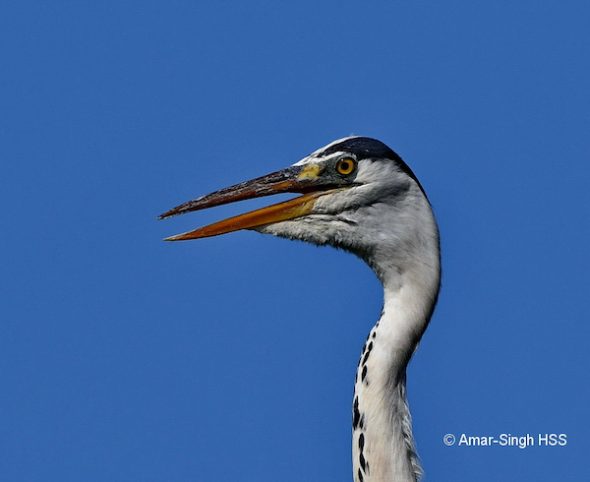I have often observed egrets and herons with a gular flutter when the weather is hot (like today). Gular fluttering is used as a means to regulate temperature. In gular fluttering, bird will often open the beak and fluttering the upper throat muscles (moist gular region). The activity is rapid and does not involve large movements of the thorax (like when we pant) – an energy efficient cooling mechanism by evaporation.

Image shows close-up of the gular flutter posture in Grey Heron.
Gordon L. Maclean 2013 (Ecophysiology of Desert Birds. Springer Science & Business Media) mentions that the respiratory rate when panting may rise to 200 movements/minute but gular flutter may occur at excess of 400-600 movements/minute. When gular flutter is independent of the rate of respiratory movements, then it can occur in excess of 900 times/minute.
I counted the gular flutter in this Grey Heron (Ardea cinerea jouyi) and it occurred at 10-12 times per second (mode 11, mean 11.3) which means it occurs at 600-720 times per minute.
A short video clip is here: https://www.youtube.com/watch?v=FJ8yIjAo3LM
Amar-Singh HSS (Dato’ Dr)
Ipoh, Perak, Malaysia
Location: Outskirts of Ipoh, Perak, Malaysia
Habitat: Wetlands, ex-mining pools
Date: 15th January 2019
Equipment: Nikon D500 SLR with Nikon AF-S Nikkor 500mm f/5.6E PF ED VR, handheld








